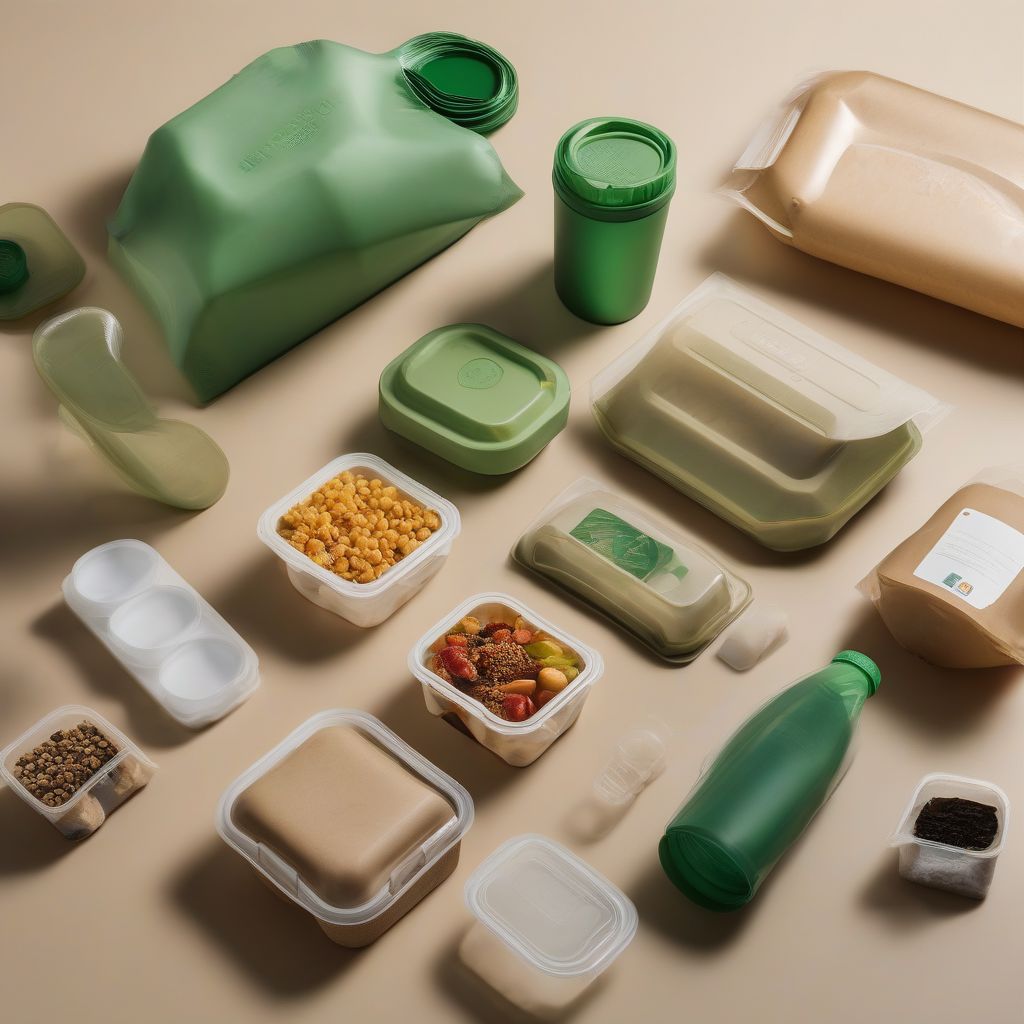Imagine a world where plastic doesn’t choke our oceans, where packaging disappears without a trace, and where industries thrive on sustainable materials. This isn’t a utopian dream, but a rapidly approaching reality thanks to the innovative world of bioplastics and green materials. These eco-friendly alternatives are revolutionizing industries, offering a path towards a more sustainable future. From the food we eat to the cars we drive, their impact is becoming increasingly profound.
What are Bioplastics and Green Materials?
Before diving into the transformative impact, let’s clarify what these materials are. Bioplastics are derived from renewable biomass sources, such as vegetable fats and oils, corn starch, or microbiota. Unlike conventional plastics made from petroleum, bioplastics offer the potential for biodegradability and compostability, reducing our reliance on fossil fuels and minimizing plastic waste.
Green materials, on the other hand, encompass a broader category of sustainable materials that are environmentally friendly throughout their lifecycle. This includes recycled materials, bio-based materials like bamboo and hemp, and materials designed for easy disassembly and reuse. These materials prioritize reduced environmental impact, focusing on resource efficiency, recyclability, and minimal toxicity.
The Transformative Impact Across Industries
The adoption of bioplastics and green materials is reshaping industries across the globe. Let’s explore some key examples:
Packaging: A Revolution in Sustainability
The packaging industry is at the forefront of this revolution. Biodegradable and compostable bioplastics are replacing traditional plastic packaging for food, cosmetics, and other consumer goods. This shift reduces landfill waste and minimizes the environmental burden of packaging disposal. Imagine grocery bags that decompose in your compost bin instead of persisting for centuries in a landfill.
Agriculture: Closing the Loop
In agriculture, bioplastics are utilized for mulch films, plant pots, and seed coatings. These applications offer benefits like improved soil health and reduced plastic waste in agricultural environments. Moreover, some bioplastics can release nutrients as they decompose, further enriching the soil.
Automotive: Driving Towards a Greener Future
The automotive industry is incorporating bioplastics and green materials into car interiors, reducing the reliance on petroleum-based plastics. From dashboards to door panels, these sustainable alternatives contribute to lighter vehicles, improved fuel efficiency, and a reduced carbon footprint.
Textiles: Weaving a Sustainable Fabric
The textile industry is embracing bio-based fibers like hemp and bamboo, creating sustainable and eco-friendly clothing options. These materials require less water and pesticides to grow compared to conventional cotton, making them a more environmentally responsible choice.
Construction: Building a Greener Tomorrow
The construction industry is exploring the use of bio-based materials like bamboo and timber, as well as recycled materials, to create sustainable and energy-efficient buildings. These materials offer advantages in terms of carbon sequestration and reduced environmental impact compared to traditional building materials.
 Bioplastic Packaging
Bioplastic Packaging
The Challenges and Opportunities
While the potential of bioplastics and green materials is immense, challenges remain. The cost of production can be higher compared to conventional materials, and the availability of infrastructure for composting and recycling bioplastics is still developing. However, ongoing research and development are addressing these challenges, leading to more cost-effective production methods and improved end-of-life solutions.
“The future of our planet depends on our ability to embrace sustainable solutions,” says Dr. Emily Carter, a leading materials scientist. “Bioplastics and green materials offer a crucial pathway towards a circular economy, where resources are reused and waste is minimized.”
A Future Shaped by Sustainability
The transition to bioplastics and green materials represents a significant step towards a more sustainable future. By embracing these innovative materials, industries can reduce their environmental impact, conserve resources, and create a healthier planet for generations to come. From packaging to construction, the transformative potential of these materials is reshaping the way we live and interact with the world around us.
Conclusion
The shift towards bioplastics and green materials marks a crucial turning point in how industries operate and contribute to a sustainable future. We’ve seen how these innovative materials are revolutionizing packaging, agriculture, automotive, textiles, and construction, offering eco-friendly alternatives to conventional materials and reducing our reliance on fossil fuels. While challenges remain in terms of cost and infrastructure, ongoing advancements promise to make these materials even more accessible and impactful.
Embracing bioplastics and green materials isn’t just about adopting new materials; it’s about embracing a new mindset. It’s about prioritizing sustainability, minimizing waste, and building a circular economy that values resource efficiency and environmental stewardship.
We encourage you to join the conversation. Share your thoughts on the future of bioplastics and green materials in the comments below, and let’s work together towards a greener tomorrow. Explore more about sustainable living on our website and discover how you can make a difference.



